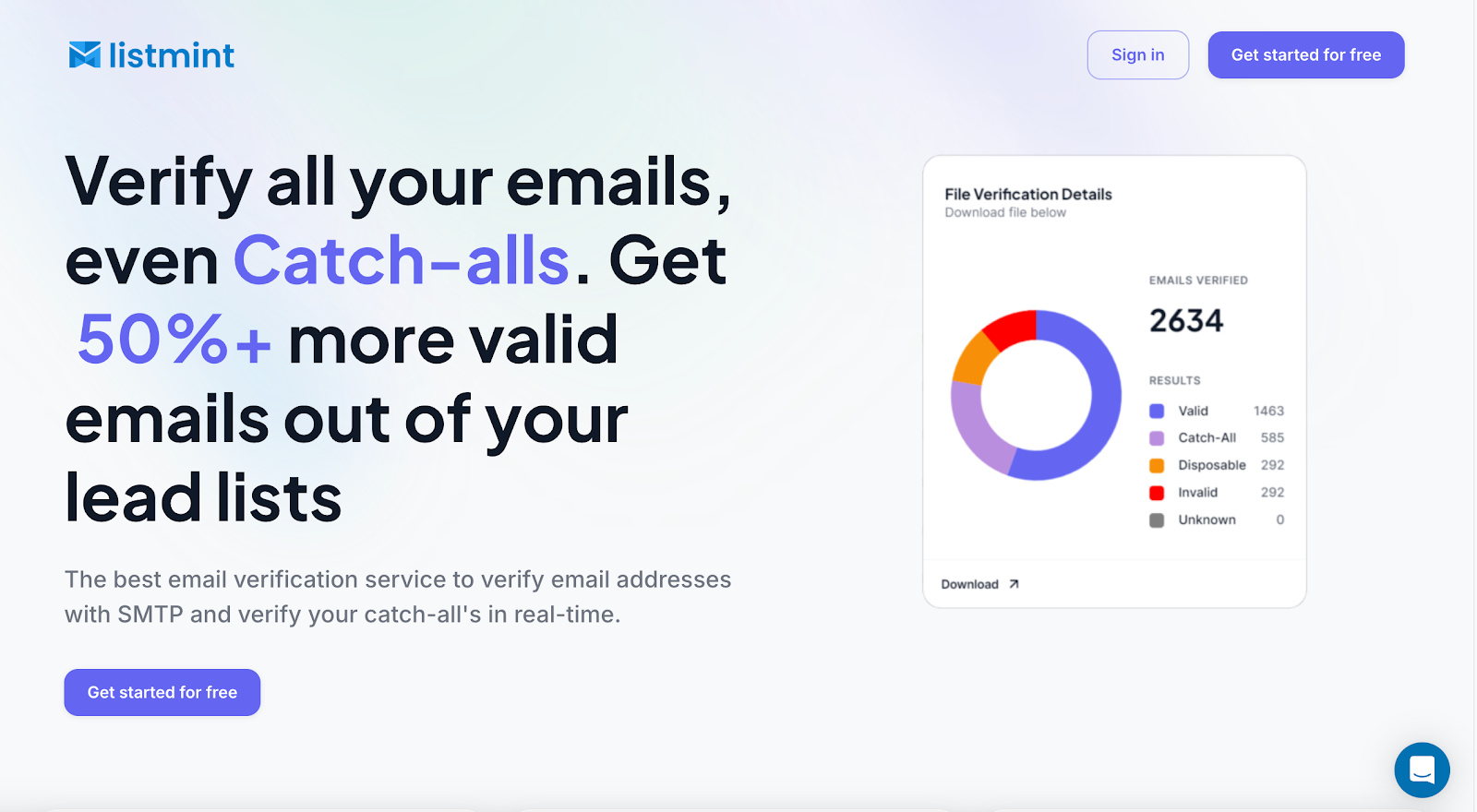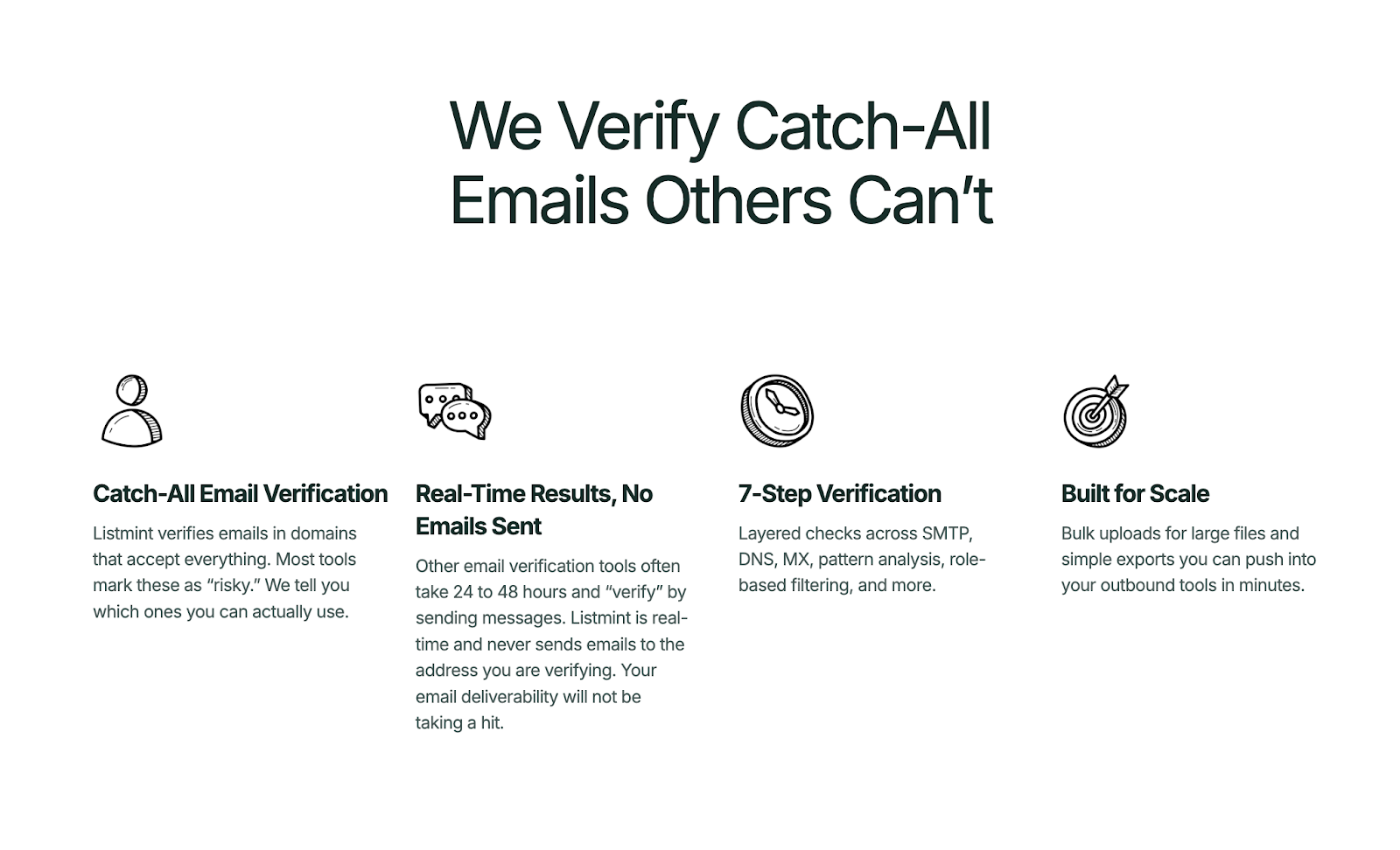
Sending an email doesn’t guarantee it will be seen. Messages may get accepted by the server, but that doesn’t mean they reach the place where subscribers actually look. For marketers and sales teams, that gap often decides whether a campaign performs well or quietly fails.
The real measure of success is not just about delivery but about visibility. That’s where inbox placement comes in. It shows whether emails arrive in front of real people instead of being hidden or ignored.
In this guide, we’ll break down what inbox placement means, how it’s calculated, and the factors that influence it. You’ll also learn practical steps to improve results and how Listmint helps teams protect deliverability and get more value from every send.
Inbox placement refers to the percentage of emails that reach the inbox rather than being filtered into the promotions tab, junk folder, or spam folder. It measures visibility inside the recipient’s mailbox, showing where messages land after delivery.
Strong placement rates mean emails appear in the primary inbox, where subscribers are more likely to open and engage. Poor inbox placement pushes messages out of view, lowering open rates, clicks, and overall campaign performance.
Major mailbox providers make placement decisions based on signals such as sender reputation, authentication, engagement history, and email content.
Understanding these factors helps marketers improve deliverability and secure better inbox placement rates.
Delivery rate shows how many emails were accepted by the recipient’s mailbox provider. It confirms delivery at a technical level but doesn’t reveal where those messages appear inside the mailbox.
Inbox placement rate (IPR) focuses on visibility. It reflects the percentage of emails that land in the inbox instead of bing filtered into promotions or the spam folder.
Strong placement rates mean subscribers are more likely to see and act on your messages, while poor inbox placement hides them in less visible folders.
Looking only at the delivery rate can create a false sense of success. Campaigns may show high delivery numbers, yet most emails never reach the primary inbox.
Tracking inbox placement rate gives email marketers a clearer view of performance and highlights how sender reputation, proper authentication, and engagement metrics influence visibility.
IPR is measured with a straightforward formula:
Inbox Placement Rate = (Number of Emails in Inbox ÷ Total Emails Sent) × 100
For example, if 100 test emails are sent and 95 reach the inbox, the inbox placement rate is 95%. This percentage reflects how well your email program places messages in front of recipients, not just how many emails were delivered by service providers.
To measure this accurately, marketers often rely on seed list testing alongside inbox placement testing. Placement testing uses seed list addresses across major internet service providers (ISPs) to reveal how incoming emails are sorted.
Results are paired with inbox placement reports to validate the testing methodology, identify placement issues, and gain actionable insights.
Combined with engagement history and domain reputation signals, these tests help pinpoint why emails land in specific folders and guide improvements for better inbox placement rates.
Several signals guide how major mailbox providers handle incoming emails. Paying attention to these factors helps avoid placement issues and achieve better inbox placement rates:
Better inbox placement depends on healthy data, proper authentication, and meaningful recipient engagement. The following strategies help email marketers avoid deliverability issues and secure better placement rates.
Strong list hygiene protects the sender's reputation. Invalid addresses, spam traps, and hard bounces reduce trust with mailbox providers and lower inbox placement.
To stay protected, remove inactive contacts regularly and suppress addresses that generate repeated bounces. Avoid using purchased lists, as they often contain risky or outdated data.
A well-maintained list of engaged recipients makes it easier for both marketing emails and transactional emails to reach the inbox.
Email service providers (ESPs) rely on authentication protocols to verify identity. Setting up SPF and DKIM records is the minimum requirement, while DMARC adds another layer of trust.
Without proper authentication, providers may flag messages as risky and route them to the junk folder. Aligning authentication records improves placement rates and helps maintain a strong domain reputation.
Placement decisions are shaped by engagement metrics such as opens, clicks, and replies. Consistently low interaction tells major providers that content lacks value, which can limit future deliverability.
Segmentation helps reach the target audience with relevant email campaigns. Testing subject line variations and personalizing content keeps subscribers engaged, rather than sending the same email to everyone, signaling that your emails belong in the primary inbox.
High complaint levels damage domain reputation and limit inbox placement. Keeping spam complaints low requires sending relevant content at the right frequency and giving subscribers control over their preferences.
Always provide a clear unsubscribe link. Using a double opt-in during sign-up confirms that your list is filled with people who genuinely want your messages, reducing placement issues over time.
Real-time verification stops invalid and risky addresses at the point of entry. This prevents hard bounces and improves email deliverability by keeping your database filled with valid contacts only.
Listmint verifies addresses in real time, including catch-all addresses, which protects campaigns from placement issues. Ongoing verification provides actionable insights that improve placement rates across both cold emails and long-term marketing efforts.
Most email programs report very high delivery rates, around 98%, but many of those delivered messages never reach the primary inbox.
When inbox placement rate drops, open rates and click-through rates decline sharply. Messages routed to spam or secondary folders see visibility fall drastically, even if the delivery rate looks strong.
Inbox placement affects the reputation of the sender with major email providers. Poor placement raises spam complaints and lowers engagement, which in turn triggers stricter filtering.
Higher inbox placement improves return on investment. Email programs with strong visibility typically generate much higher revenue, especially with transactional emails and targeted email campaigns. Real visibility means more opens, more clicks, better conversions.
When your messages land where recipients actually look, email marketing performance improves across the board. Messages reach engaged recipients, not hidden folders.
Strong inbox placement depends on data quality. Even the best content and authentication setup cannot overcome a list filled with invalid addresses or hidden spam traps. That is where Listmint makes the biggest difference.

Most verification tools stop at standard checks, leaving 30–40% of a list flagged as catch-all. Those addresses are often thrown away, even though many are valid.
Listmint verifies them in real time without sending test emails, helping teams recover over 50% more usable leads that would otherwise go to waste.

With 1B+ emails verified and a proven 99%+ accuracy rate on both SMTP and catch-all verifications, Listmint delivers a stronger data foundation than typical email deliverability tools, protecting sender reputation at scale.
Marketers and agencies running high-volume campaigns use the platform to cut bounces, reduce deliverability issues, and maintain better inbox placement rates across both marketing and transactional emails.
Marketers using Listmint highlight its accuracy, speed, and ability to handle both standard and catch-all verification in one place.

⭐⭐⭐⭐⭐
"The fastest, easiest, and most effective validation tool. SMTP + Catch-all validation in one platform is the most cost effective and fastest way to get as many emails validated as possible."
-Matt Lucero, Founder at Anevo Marketing

⭐⭐⭐⭐⭐
"A lifesaver for my lead generation agency. It’s the best platform for verifying emails, both in terms of cost and logistics. I run an agency with 40+ clients and 70–80 cold email campaigns at a time. Using Listmint simplifies the verification process and helps us avoid bounces by only giving valid emails. The ability to do both standard and catch-all verification in the same platform is a gamechanger."
-Liz M., Mirraponte Marketing

⭐⭐⭐⭐⭐
"The best platform for lead verification. Listmint makes it extremely easy to verify email credits, both standard and catch-alls, in one platform. It saves my team hours by letting us do it all in one place."
-Ryan S., CEO
Listmint gives email marketers the data foundation they need to achieve better inbox placement. With faster verification and deeper accuracy, campaigns see fewer hard bounces and stronger engagement. Over 84% of catch-all emails verified as valid have helped businesses reach audiences that competitors overlook.
Get started for free today with Listmint!

Strong email performance starts with visibility. Sending to the right people only works if your messages actually reach them. Clean data, trusted authentication, and engaged subscribers all play a role, but accurate verification is the foundation that keeps everything working.
Listmint helps you protect that foundation. With instant validation of both standard and catch-all email addresses, you send with confidence, reduce wasted effort, and give every campaign the chance to succeed.
Start building stronger results today. Get started for free with Listmint.
An inbox placement test checks where emails land after delivery, such as the primary inbox, promotions, or spam. Marketers often use seed testing and seed list addresses to preview placement results across major providers.
Some inbox placement tools also generate reports that show folder placement before a full campaign is launched.
You can check inbox placement with testing accounts across different email providers or by using specialized inbox placement tools. These tools analyze placement decisions and help identify issues that affect visibility.
Tracking engagement metrics and reducing spam complaints further improves placement accuracy.
Inbox placement instantly refers to real-time verification and monitoring that shows where emails are sorted immediately after sending.
It’s especially useful for transactional emails such as order confirmations or password reset instructions, where speed and inbox visibility are critical.
Deliverability measures whether emails are accepted by a mailbox provider, while inbox placement shows the exact folder where they appear. For example, marketing emails may deliver successfully but still miss the primary inbox.
Transactional updates like shipping updates usually achieve stronger inbox placement because providers view them as essential.
Verify all your emails, even Catch-alls in real-time with our Email Verification Software.
Create an account for free.